Millarville, Alberta
“Call me anything you like, just don’t call me late for dinner.”
This old joke has been circulating since the 1860s. It never seems to grow old.
Halls Auction held an on-line antique sale last week, with several pieces of Canadiana on the roster. I raised my virtual hand a few times and two railroad dinner chimes followed me home.
This CPR dining car, five-bar chime was used by porters to call rail passengers to dinner in the 1920s.
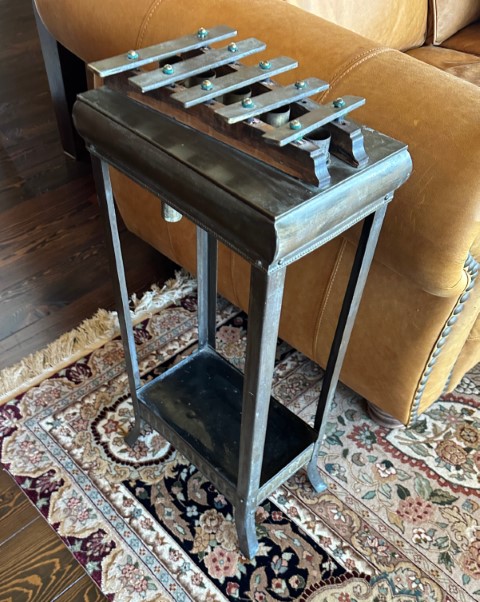
The table-mounted instrument needed some TLC. Some of the ceramic frets that hold the bars suspended were broken, and felts were missing. The table had a few dents and scratches.
I found a felt snow boot liner (I won’t need the boots until next winter anyway) and used slices of it and plastic dowel to replace the broken frets. I applied autobody repair techniques, (developed through years of abusing motor vehicles), to remove most of the road rash on the stand.
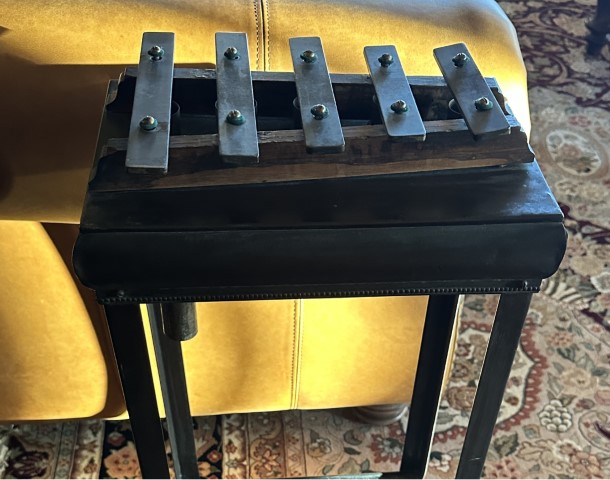
The result is, I have three of the five tone bars making pleasing sounds, two bars will need more tinkering. The stand still has creases, but only on the side that faces the wall.
Chime instruments have been around for millennia. Many have funky names like “Xylophone”, “Glockenspiel”, and “Marimbaphone”. An American manufacturer of glockenspiels, J.C. Deagan, Inc, modified the technology and developed the dinner chime. Deagan marketed the simple 4 to 6-bar chimes to hotels, ships, and railroads, who used gentle tones to call guests to dinner.
I was the last bid on this 1930s J.C. Deagan, Inc, hand-held dinner chime. It is showing some wear, but the chimes are still perfectly tuned.
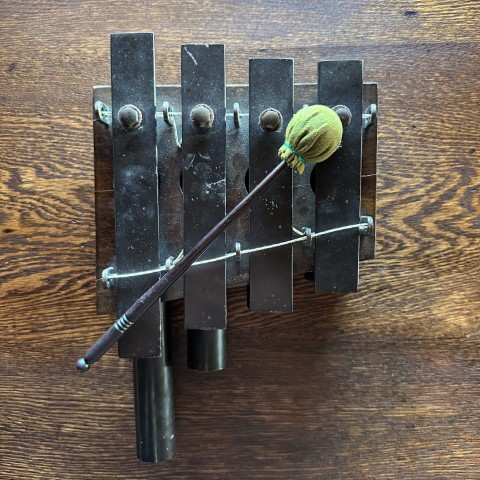
I have zero musical ability, but Bear was able to pull off a recognizable Twinkle, Twinkle, Little Star, on the smaller instrument.
I don’t know why I need two railroad dinner chimes, but they are fun conversation pieces. The table-mounted one might look good in the living room, near the piano.
The small one will have a permanent place at the kitchen table. With any luck, I will never again be…
… Late For Dinner.
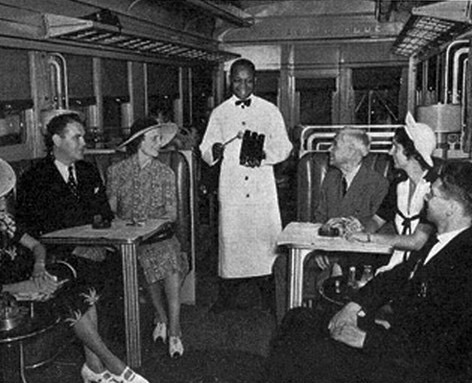
In other “Chime News” ….
Ivy, my first wife (I respectfully refer to her as “my practice spouse”), had perfect pitch. Her ability to interpret musical notes led to a brief career as an organized crime fighter.
In the late 1970s, the Ontario Provincial Police in Thunder Bay had recorded some gangsters placing a telephone call to a mob boss from a hotel room phone. The police needed someone with the ability to identify the recorded telephone dialling tones and correlate them to numbers on a touch-tone phone.
The OPP approached the Thunder Bay School of Music who referred them to Ivy, proclaiming her extraordinary ability to identify musical notes. The OPP had Ivy press all 10 keys on the hotel touch-tone phone, then they played the recording. Without hesitation, Ivy told them that the number dialled was 524-3341.
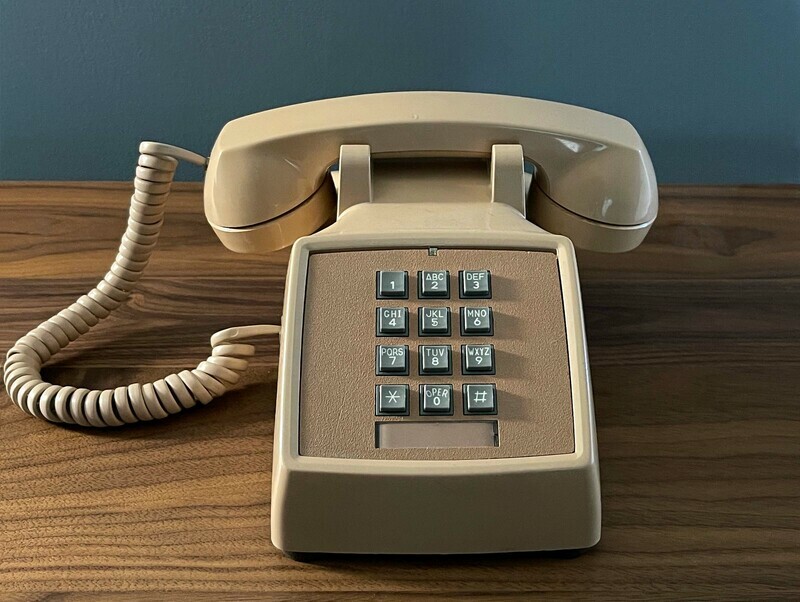
The police officers asked Ivy to listen to the recording a second time to confirm. She agreed, but told them it wasn’t necessary, the recorded tones were definitely 5-4-2-3-3-4-1.
The OPP never followed up to let her know if they arrested the gangsters but, having witnessed Ivy’s musical ability, I am certain she had given them the mob boss’s correct number.
(for the record, the number above isn’t real, don’t attempt to call The Godfather)
One of the most recognizable dinner chime riffs is the NBC sound mark, G-E-C. The tone was developed in 1927 as a radio interval signal, designed to identify NBC’s radio segments to its audience.
The short chime and peacock image are still in use by NBC television – Click here; G-E-C.
In the late 1930s, NBC added a fourth note, a repetition of the “C” at the end, to alert broadcasters to major news events. NBC first used G-E-C-C in 1937 to announce the Hindenburg Disaster.
The four-note chime was used again on D-Day and other occasions during World War II.
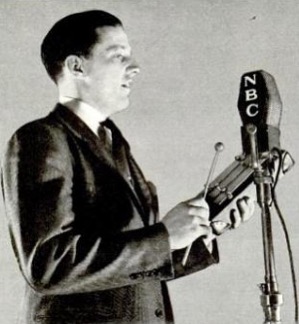
NBC still uses a version of the chime sequence to herald special breaking news. Broadcasters have nicknamed the sound, The Chimes of Doom, as they often precede reports of catastrophe.
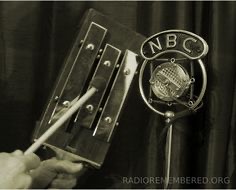
Like and Subscribe…
To join the WellWaterBlog audience, scroll down and add your e-mail address to the growing list. You will receive a notice each time a new article is posted and nothing else – No Advertising, No Solicitations, No B.S., Just Fun.


GG
You can NEVER have too many railway things.
Russ Paton
The voice of experience …..